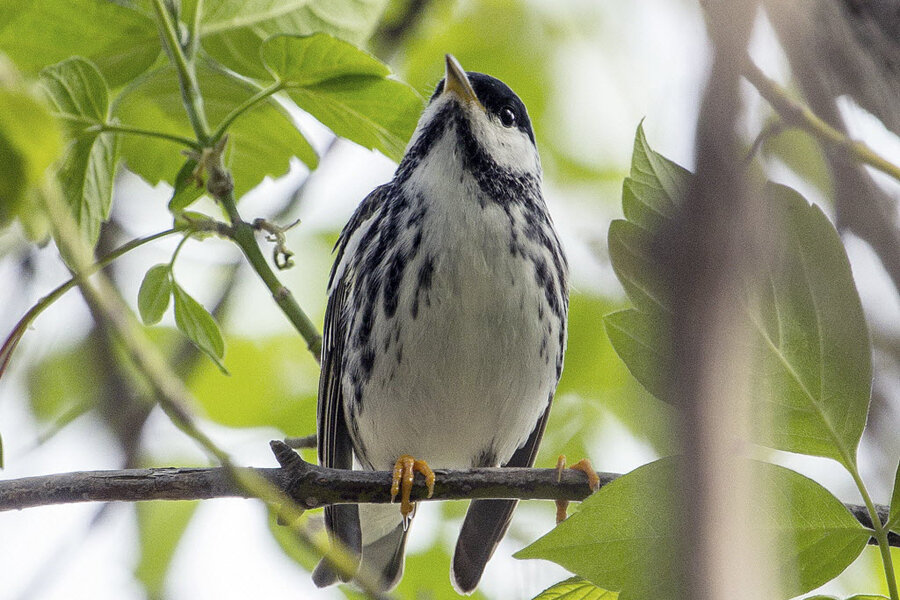How a tiny songbird can fly 1,700 miles over open ocean
Loading...
It weighs only as much a tablespoon of sugar, and it flies almost two thousand miles over open ocean, without a single break.
Scientists can now conclusively say that the pocket-sized blackpoll warbler makes the longest overseas migration of any land bird. By fitting the birds with tiny geolocating “backpacks,” researchers were able to map out the grueling migration. Their findings appeared Tuesday in Biology Letters.
The blackpoll warbler, or Setophaga striata, is a songbird native to North America, weighing on average a mere 12 grams. Every winter, these tiny birds migrate to South America in droves – but for more than a half-century, scientists have been unsure exactly how they got there.
Other warblers native to the continent fly south through Mexico. But reports of blackpolls landing on boats in stormy weather suggest that they were taking an alternate route over the Atlantic Ocean. Some ornithologists were skeptical – the trek would be perilous, and a water landing would mean certain drowning for a fatigued bird. So an international team of researchers fit 40 birds in Vermont and Nova Scotia with tracking devices to follow the journey. And amazingly, the little blackpoll proved its mettle.
“This is the first study to provide direct evidence of the birds’ migration route – we found they flew directly over the Atlantic Ocean to reach their wintering grounds in South America,” said co-author Ryan Norris, a professor at the University of Guelph, in a press release.
To avoid drowning, the birds must complete the entire migration – up to 1,700 miles – without stopping for rest. The flight takes just two to three days, but requires a great deal of preparation.
“These birds have a tremendous voyage ahead of them, with some likely flying from western Canada to the east coast before flying south,” Norris said. “They eat as much as possible, in some cases doubling their body mass in fat so they can fly without needing food or water.”
The extreme flight does take its toll on blackpoll warblers – Norris told the Guardian that only half survive the trip. But even that is a feat “on the brink of impossibility.”
“For blackpolls, they don’t have the option of failing or coming up a bit short,” Norris said in the press release. “It’s a fly-or-die journey that requires so much energy.”






